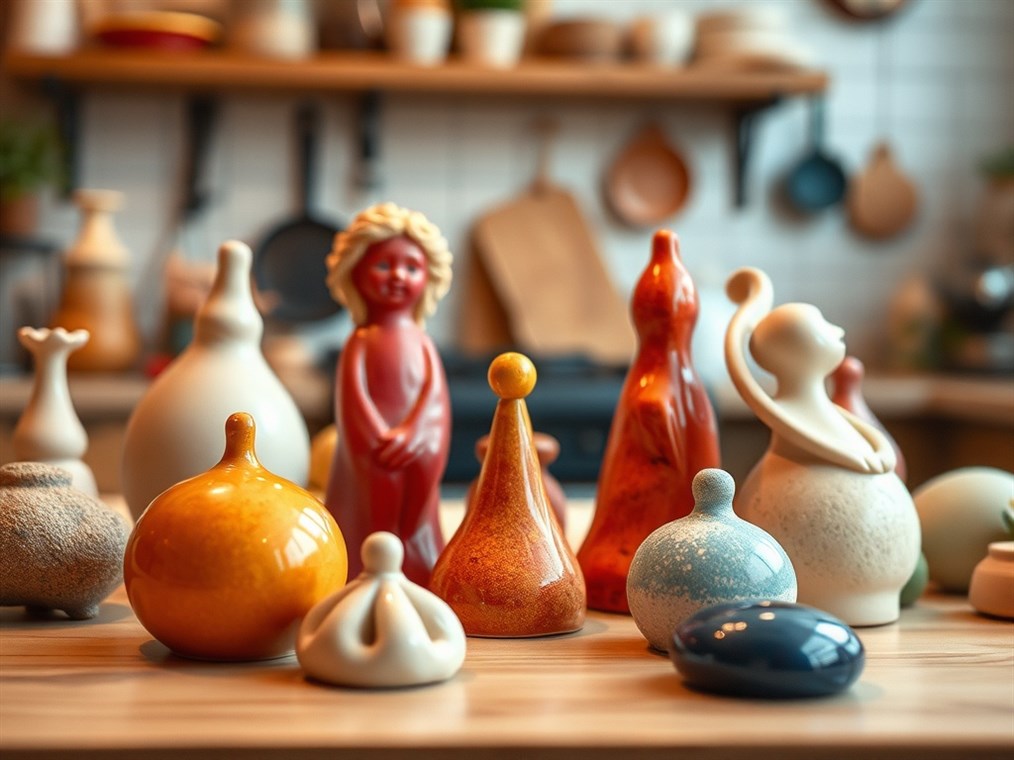Can You Glaze Oven Clay? Let’s Get Real
Okay, so you’ve got some oven-bake clay, also known as polymer clay, and you’re itching to give it that professional, glazed look? I get it! It’s tempting to reach for a traditional glaze, but hold on a sec. Unlike regular pottery clay, this stuff hardens in your kitchen oven, which is super convenient, right? But it also means we need to think differently about how we “glaze” it.
Think of polymer clay as the accessible, fun cousin of traditional ceramics. It’s easy to use, comes in a million colors, and you don’t need a kiln! Sculpey, Fimo, Premo – you’ve probably heard of them. These clays are PVC-based and stay soft until you bake them. I remember the first time I used Sculpey; I was amazed at how strong it got after just a short time in the oven.
Now, here’s the thing: traditional ceramic glazes? Forget about it. Those need crazy-high temperatures, like, way hotter than your oven can handle. We’re talking temperatures that melt glass, because, well, that’s basically what they are! So, can you really “glaze” oven clay? Not in the traditional sense.
But don’t despair! You can totally get that glazed effect. You just need to think outside the box and use products designed specifically for polymer clay. It’s all about finding the right alternative.
So, what can you use? Let’s dive in:
- Polymer Clay Glazes: Obvious, right? Brands like Sculpey and Fimo make their own glazes that work perfectly with their clays. They’re usually water-based and come in glossy or satin finishes. Easy peasy!
- Acrylic Sealers: These are your basic, reliable option. You can find them in matte, satin, or glossy, and they’re a simple way to protect your creation.
- Water-Based Varnishes: Non-toxic and versatile, these are great for indoor projects. I’ve used them on everything from jewelry to little figurines.
- Polyurethane Finishes: Want something super durable? Water-based polyurethane finishes are your friend. I’ve heard Varathane Diamond Wood Finish is a winner.
- Resin: For a super glossy, professional look, resin is the way to go. It’s perfect for smaller pieces, giving them that cool, domed effect. Fair warning, though: it can be a bit tricky to work with.
- Liquid Polymer Clay: Yep, you can use more clay to “glaze” your clay! It guarantees compatibility, which is always a plus.
- Floor Finishes: Sounds weird, I know, but some crafters swear by water-based floor finishes like Pledge Floor Gloss. Apparently, they’re super durable and dry quickly. Who knew?
- UV Glazes: These are durable and give a super shiny finish without reacting badly to the clay.
Alright, so you’ve picked your weapon of choice. Now, how do you actually apply this stuff? Here’s a quick rundown:
- Bake it ’til you make it: First, bake your polymer clay piece according to the instructions. Usually, it’s around 275°F (135°C) for 15-30 minutes per ¼ inch of thickness. Pro tip: get an oven thermometer. Ovens lie!
- Chill out: Let it cool completely. Patience, young Padawan.
- Smooth operator (optional): If you’re feeling fancy, sand the baked clay with fine-grit sandpaper. This makes the finish even smoother.
- Clean slate: Wipe off any dust or debris.
- Get your glaze on: Apply thin, even coats of your chosen finish. Let each coat dry before adding another. Trust me, thin coats are the key to avoiding drips and bubbles.
- Dry time: Let it air dry for the recommended time. For resins, follow the specific curing instructions.
A few more things to keep in mind:
- Compatibility is key: Always test your finish on a scrap piece of clay first. You don’t want any nasty surprises!
- Ventilation, my friend: Work in a well-ventilated area. Seriously.
- Thin is in: Multiple thin coats are way better than one thick coat.
- Sand it, buff it: Sanding and buffing before glazing can make a huge difference.
- No food, please: While polymer clay is non-toxic, it’s best not to use glazed pieces for food or drinks. Just to be safe.
- Sheen dreams: Decide if you want glossy, satin, or matte before you start.
Oh, and one more thing: don’t confuse oven-bake clay with air-dry clay! Air-dry clay hardens on its own, without baking. You can use similar finishes on it, but it’s a different beast altogether.
So, there you have it. While you can’t use traditional glazes on oven clay, you can achieve a stunning, glazed look with the right products and techniques. Get creative, experiment, and have fun! After all, that’s what crafting is all about.

